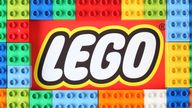The retail outlook appears gloomy but, as PepsiCo shows, there’s more to it than that
The widely-accepted narrative around consumer spending right now is that it is under pressure both in the United States and Europe.
Retail sales figures have pointed – certainly in the UK – to a decline. The British Retail Consortium reported on Tuesday that retail sales volumes in June fell for a third consecutive month, although food sales were flattered by the Queen’s Platinum Jubilee.
What is not widely acknowledged is that, in the UK at least, consumer spending is actually holding up.
The equities team at investment bank Jefferies pointed out this morning in a note to clients that, based on data from Barclaycard and the CHAPS payment system, overall consumer spending in June was actually up 6.2% on June last year and up by some 18% on the comparable pre-pandemic period in 2019.
Moreover, they noted that what might be categorised as ‘non essential’ spending rose for the 13th consecutive month, with spending with travel agents up by 338% year on year and spending with airlines up 218% year on year.
Going further back, to comparisons with the pre-pandemic period, spending on takeaways and fast food in May this year was up 82% on May 2019 while spending on digital content and subscriptions was up 47% in the same period – with spending with bars, pubs and clubs up by a comparable amount.
So the picture is far more nuanced than a lot of commentators seem to be suggesting when they talk about a cost of living crisis. Spending in shops is under pressure but spending on other consumer activities, such as going on holiday or going out, is growing strongly not only in comparison with last year but also in comparison with the pre-pandemic period.
Meanwhile, even though sales of food in shops had been coming under pressure before the one-off boost from the jubilee, it has not all been one-way traffic in that category either.
‘Tough, tough’ inflationary backdrop
The US fizzy drink, snacks and cereals combine PepsiCo today reported a better than expected 5.2% rise in sales, to $20.23bn, for the 12 weeks to 11 June. Sales on a like-for-like basis, tracking the underlying trend, were up 13%
Ramon Laguarta, PepsiCo’s chairman and chief executive, said that, given the company’s performance so far in the current financial year, it now expected its full-year sales to rise by 10% – up from the 8% it was previously expecting.
The company, which owns food brands such as Doritos, Walkers Crisps, Quaker Oats and drink brands including Pepsi, Gatorade, Ocean Spray and Tropicana, highlighted particularly strong sales growth in Latin America, Africa, the Middle East and South Asia, along with Quaker Foods North America. But even in Europe sales were up 9% – although the weakness of the pound and the euro against the US dollar meant that sales appeared to be lower once translated into greenbacks.
Hugh Johnston, PepsiCo’s chief financial officer, said that the company had been gaining share in most of its markets around the world.
However, PepsiCo appears to have been sacrificing an element of profitability to keep sales growing, with Mr Johnston noting that the company was facing a “tough, tough” inflationary backdrop.
‘We think inflation is going to persist for a while’
The company did raise prices in some areas but not by enough, across the board, to make up for the higher inflation it is seeing. Its margin fell by 45 basis points (0.45%) during the period.
Mr Johnston told CNBC: “Obviously we’re facing inflation like everyone else and we think that’s going to persist for a while, but we’re taking enough pricing to be able to manage the inflation and our focus is really much more on how we can drive costs out of the business so we can translate a good top line into a good bottom line.”
Read more:
Motorists hit by record monthly petrol price hike
Fifteen years of stagnant wages leave families ‘brutally exposed’
Mr Johnston said a recent article that had suggested the company was engaging in so-called ‘shrink-flation’ – charging the same price for fewer snacks – with Doritos had been “inaccurate”.
He added: “There are times when we will take chips out of the bag instead of taking pricing up, there’s no denying that, no doubt about it.
“There’s other times when we’ll actually increase the number of chips in the bag – and we may take pricing up a little bit along with that.
“So what we try to do is say ‘how are consumers actually using that package?’ and we actually study this stuff and try to figure out, OK based on that, what’s the right size of the bag – we move them around all the time, that’s something that happens frequently.
“For the most part, consumers seem to be very happy with it – we see the number of occasions [when its snacks are consumed] going up. People want to buy our product more and more.”
Consumers still happy to splash out on snacks and fizzy drinks
PepsiCo’s net profits during the quarter fell from $2.36bn to $1.43bn mainly due to write-downs in some assets as a result of the war in Ukraine.
On the whole, though, these were strong results for the quarter. Consumers are clearly still happy to splash out on snacks and fizzy drinks.
The big question is whether PepsiCo can continue growing sales at this pace. There are signs, as shown by the recent spat in the UK between Tesco and Heinz, that supermarkets around the world are driving a harder bargain with fast-moving consumer goods companies to stock their products.
PepsiCo has itself experienced this: it had a row in March and April this year with Loblaw, Canada’s biggest grocery retailer, over pricing that briefly saw its Frito-Lay crisps disappear from the company’s shelves.
Future such rows can be expected.


